How to write AI art prompts using a simple A + B + C formula. Learn how to combine style, technique, and color to get consistent results.
Creating great AI-generated art often comes down to one thing: the prompt.
But if you’re not sure how to write AI art prompts, you’re not alone.
I used to struggle with prompts that felt too vague or didn’t give me the results I wanted.
Eventually, I started organizing everything into three basic components:
Style, Technique, and Color.
In this post, I’ll show you a simple, practical way to build image prompts—whether you’re using ChatGPT, DALL·E, or Midjourney—with clear examples based on dog illustrations.
Why Prompt Structure Matters
Writing AI art prompts isn’t just about adding fancy words.
A clear structure helps AI understand what you actually want—and the fewer retries, the better.
That’s why I use the A + B + C formula:
- A. Art Style
- B. Technique
- C. Color Palette
Once you choose one from each category, you’re ready to go.
A. Art Style – What’s the overall look?
The art style sets the tone and mood for your image.
It’s the foundation of any good AI art prompt.
Examples:
- Animation-inspired: Pixar, Disney, Studio Ghibli, American cartoons
- Game-inspired: Blizzard, League of Legends, RPG fantasy, cyberpunk
- Digital design styles: flat design, isometric, low poly, pixel art
- Other styles: sketchbook, papercut, children’s book illustration
You don’t need to be technical.
Just ask yourself: What kind of art do I want this to feel like?
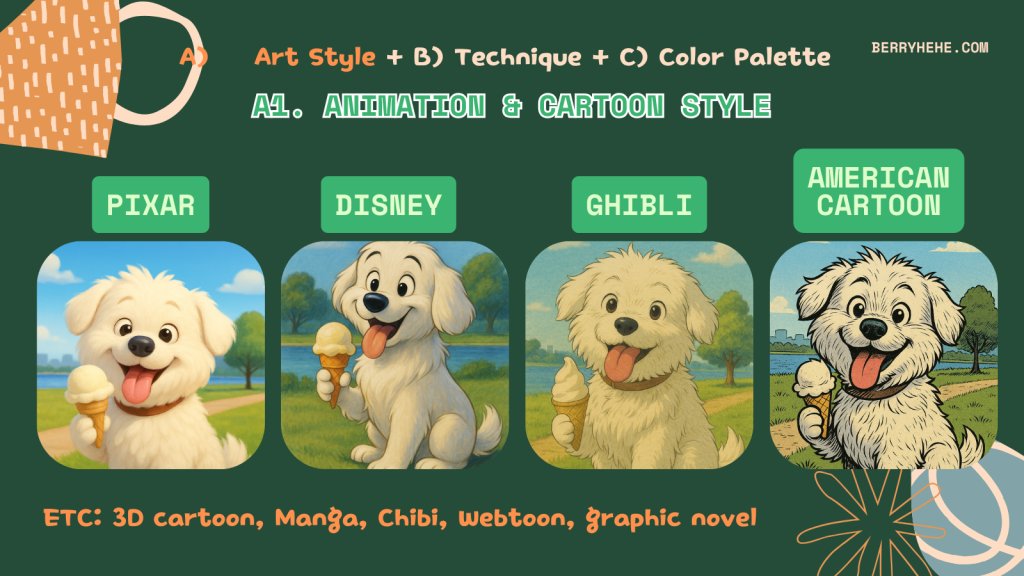
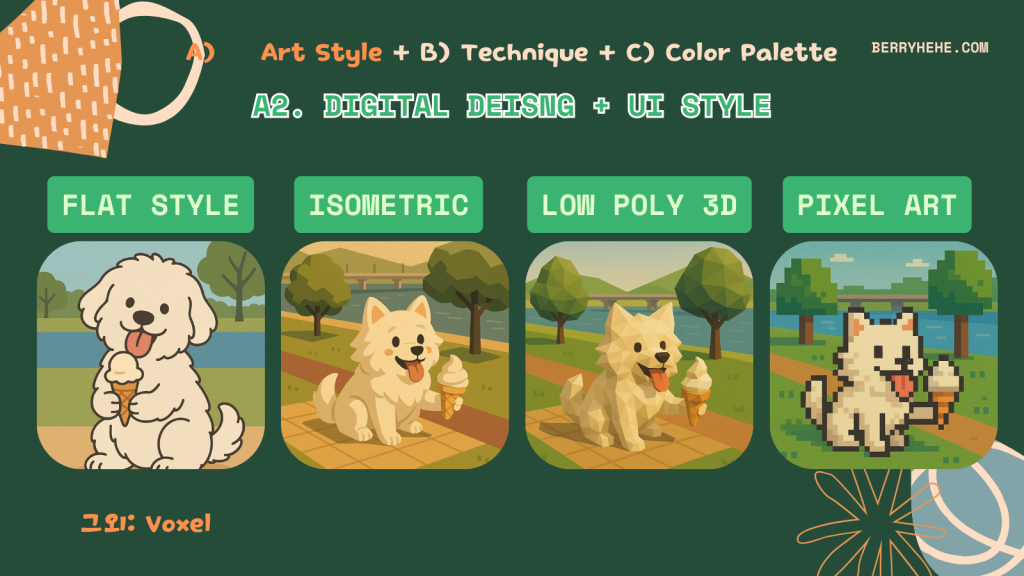
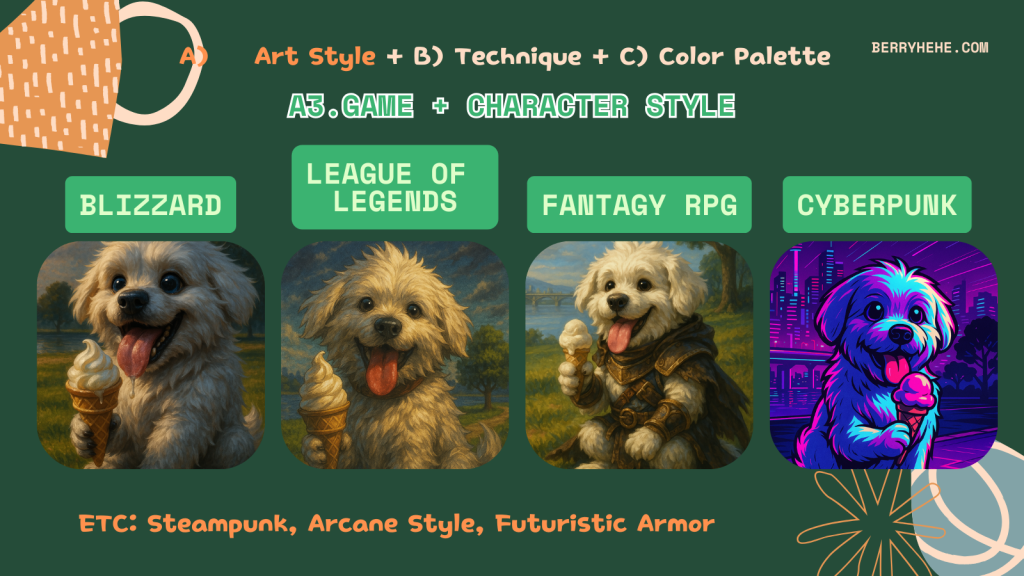
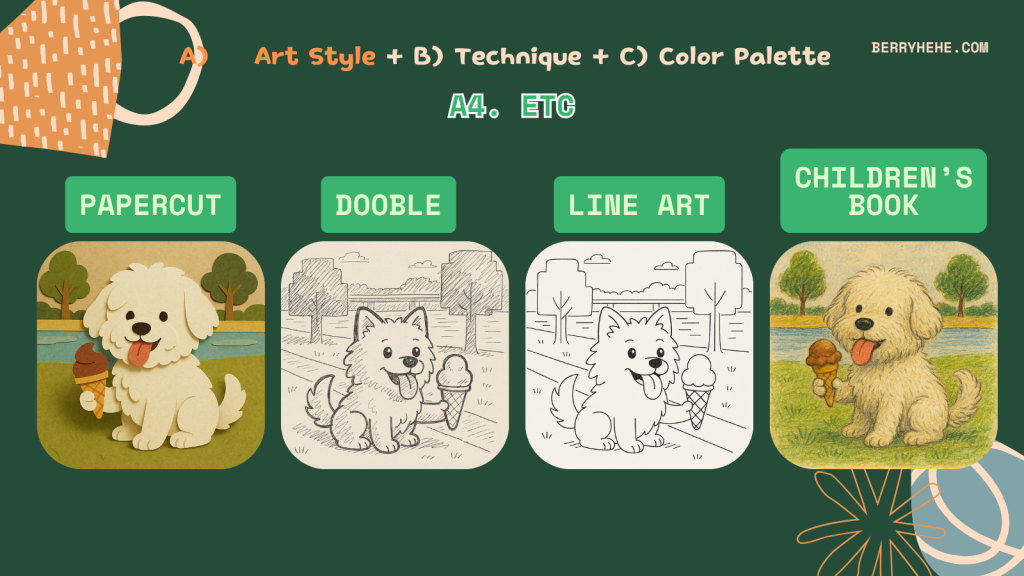
B. Technique – How should it be rendered?
Technique adds texture and detail.
Two images with the same style can look completely different depending on the technique.
Examples:
- Traditional: watercolor, pencil sketch, crosshatching, chalkboard
- Digital: vector art, 3D Blender, photorealistic
If you’re working with ChatGPT or prompting DALL·E, this part helps define the output’s “finish.”
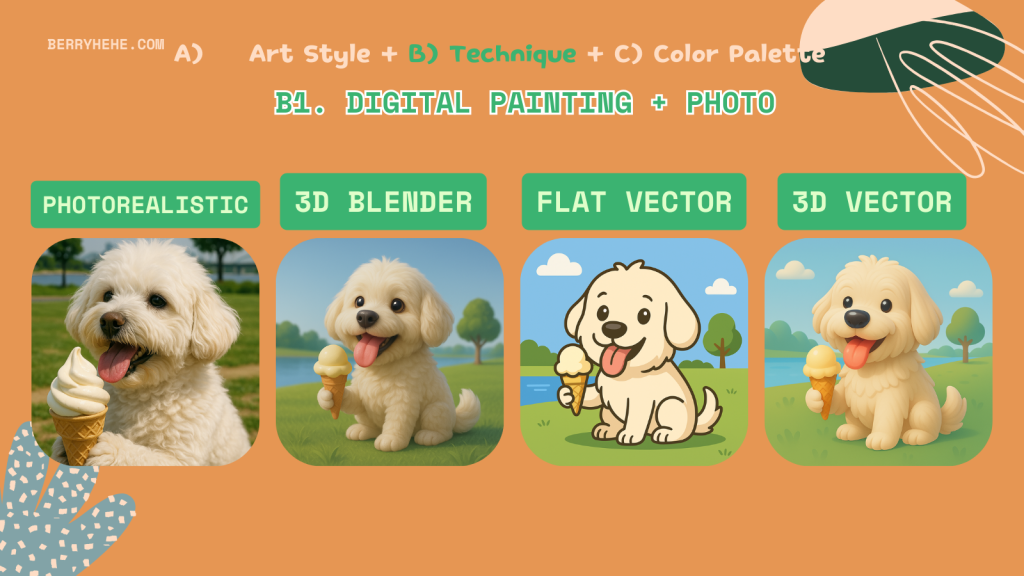

C. Color Palette – What tone should it have?
Color changes everything.
Use it to control the emotional feel of your image.
Common choices:
- Bright and saturated
- Pastel (soft and cute)
- Neutral tones, sepia, grayscale
- HEX codes (for precision: e.g.,
#ff8849)
Both ChatGPT and DALL·E understand HEX codes, so feel free to include them.
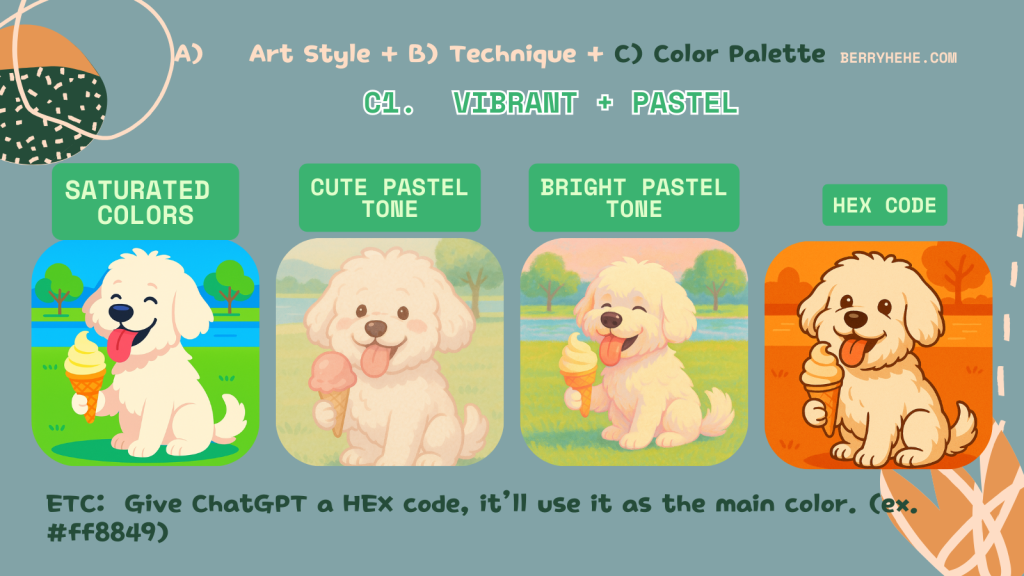
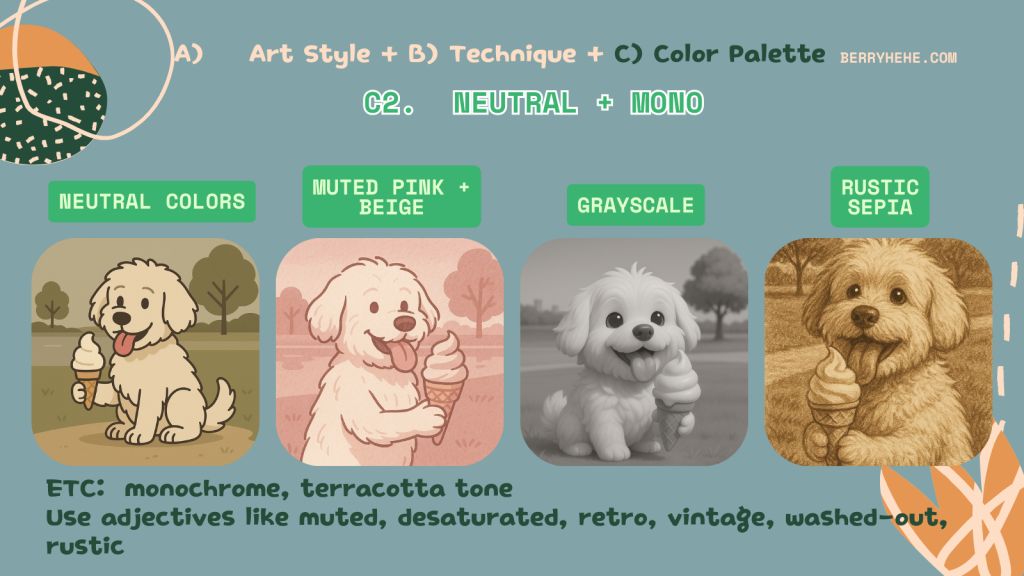
AI Art Prompt Examples Using A + B + C
Here are some tested combinations, using the same layout (a dog holding an ice cream):
- American cartoon + crosshatching + HEX
#ff8849 - Flat style + cyberpunk
- Blizzard style + pastel tone
- Doodle + blackboard art + flat vector
You can swap in different elements depending on what you want—just stick to the structure.
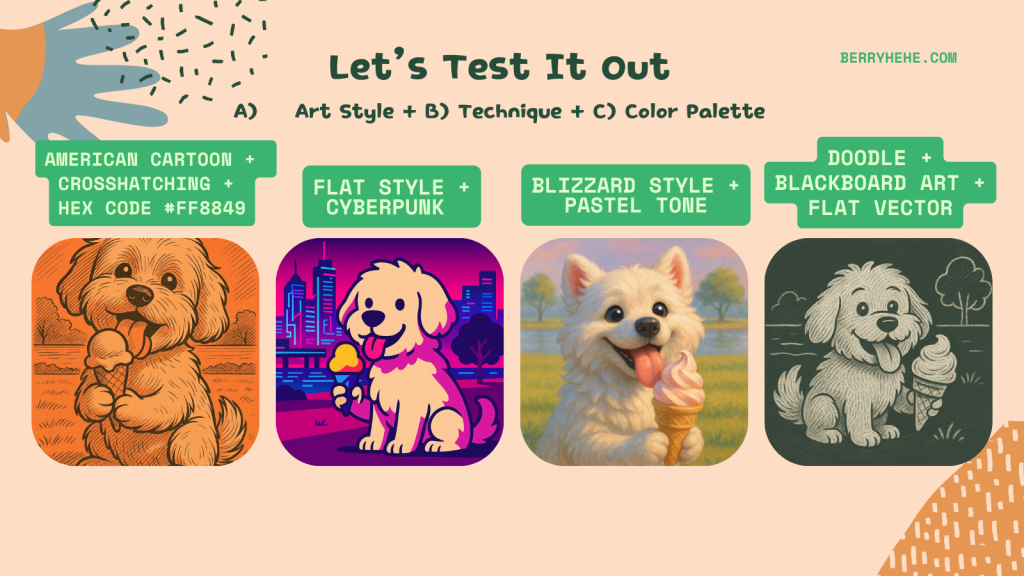
Summary: The A + B + C Formula
If you’re still wondering how to write AI art prompts, here’s the simplest version:
- Pick one art style (A)
- Add a rendering technique (B)
- Choose a color palette (C)
That’s it.
This structure works across tools like ChatGPT, DALL·E, and Midjourney, and it saves time while giving you more consistent results.
Final Notes
This guide was created for berryhehe.com.
All images and prompt structures are original.
Feel free to use this structure in your own work, just don’t redistribute it commercially.
More prompt templates, cheat sheets, and style guides will be posted soon.
If you’ve been overwhelmed by prompt writing, I hope this gave you a clear starting point.
Read More Articles: